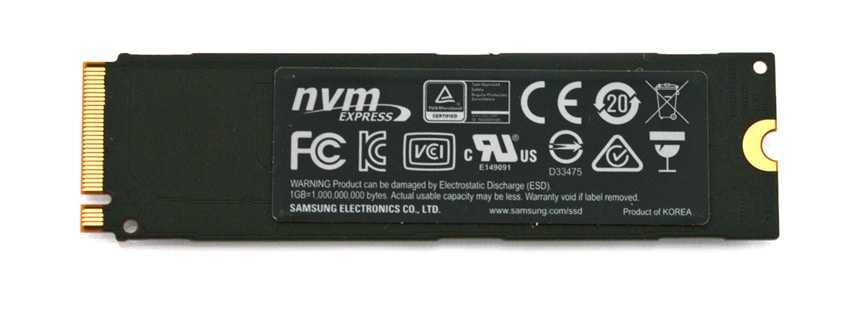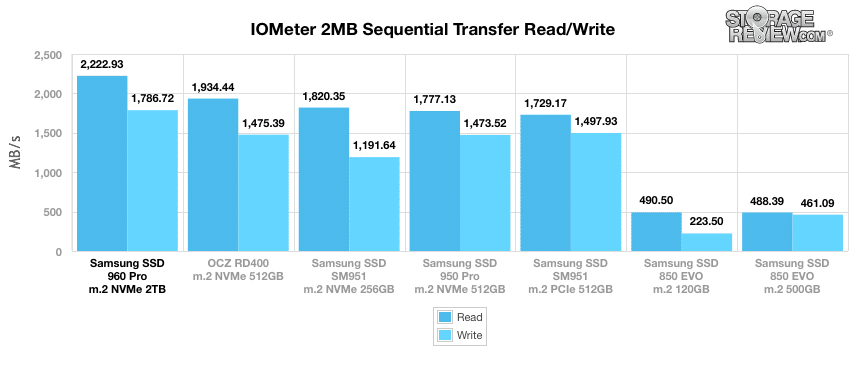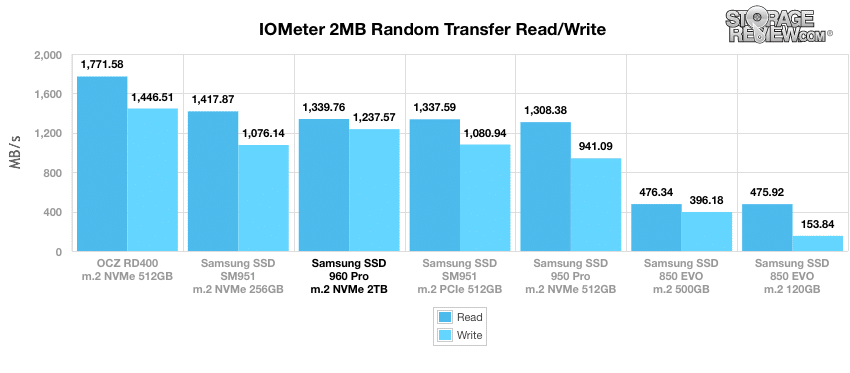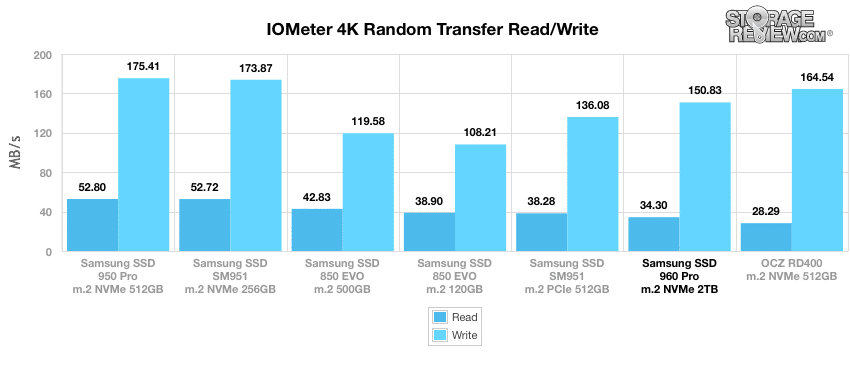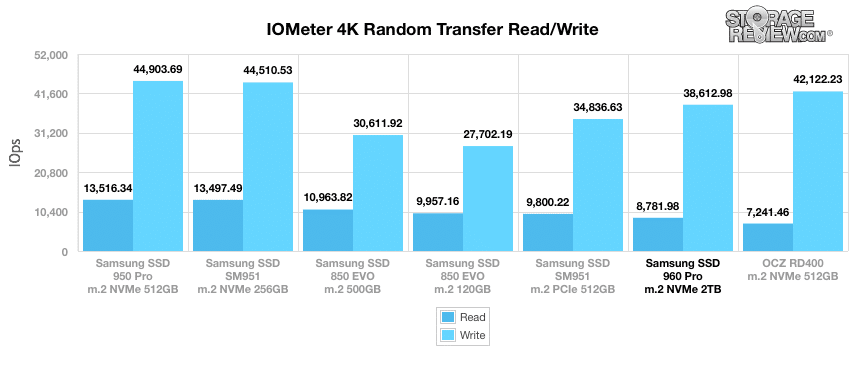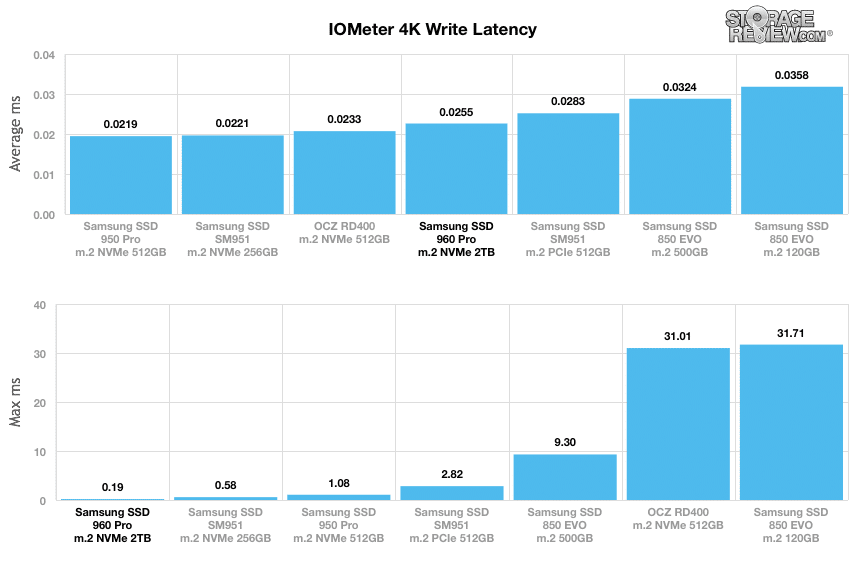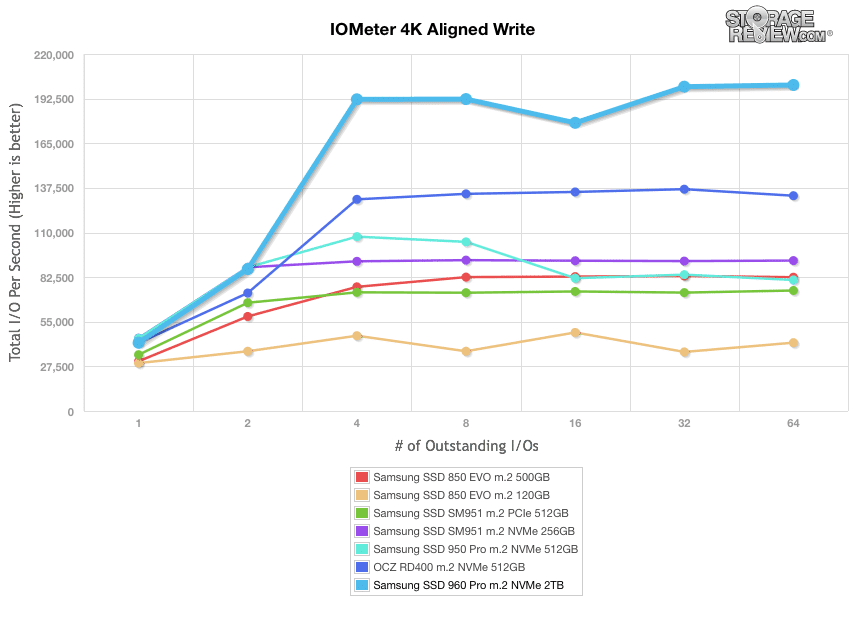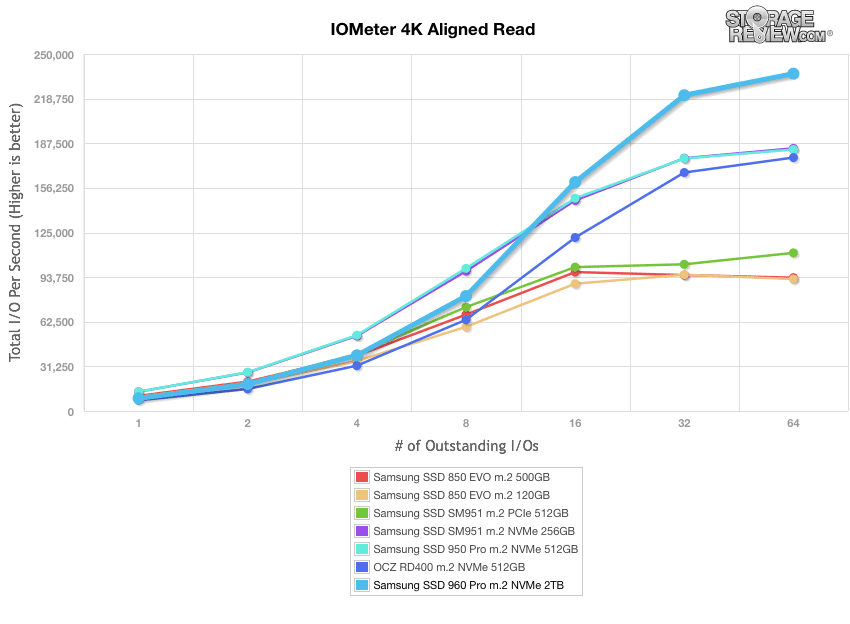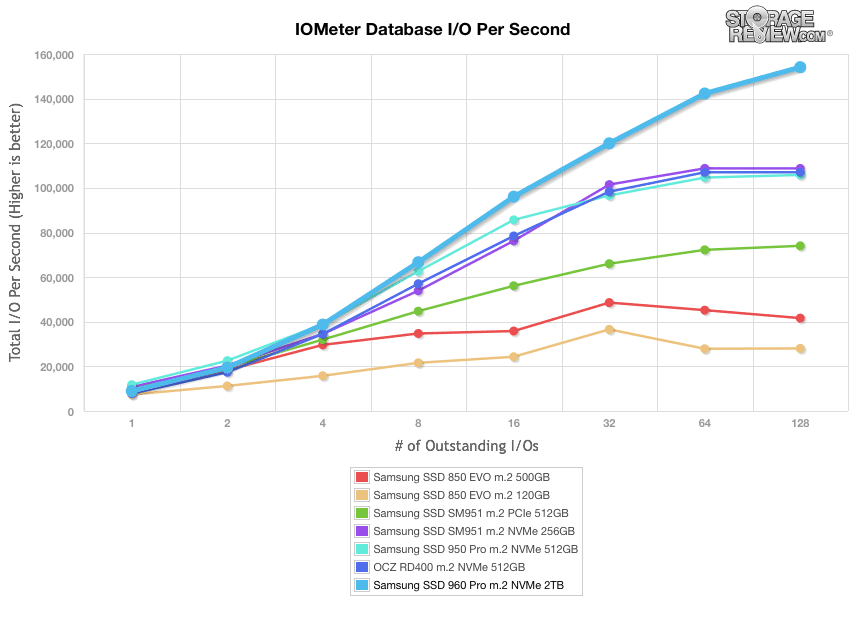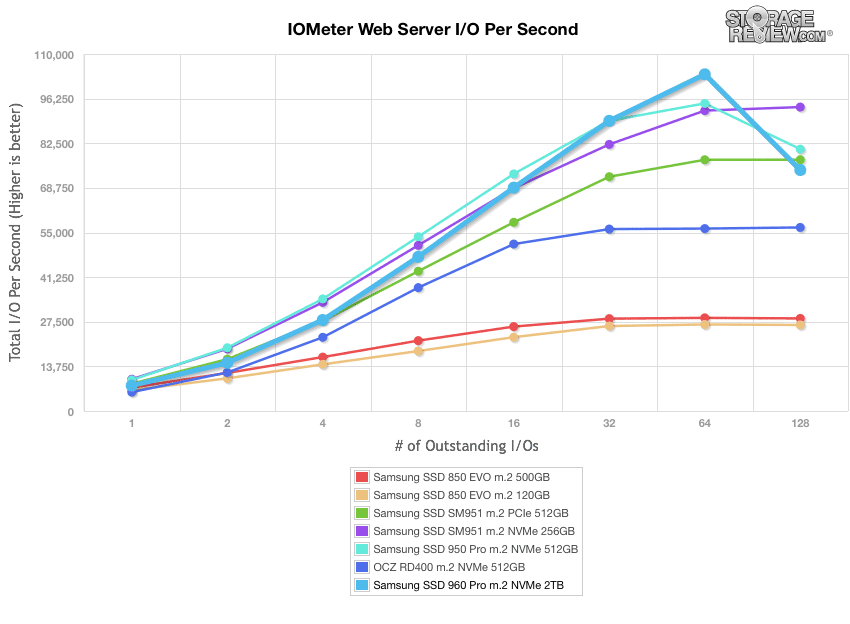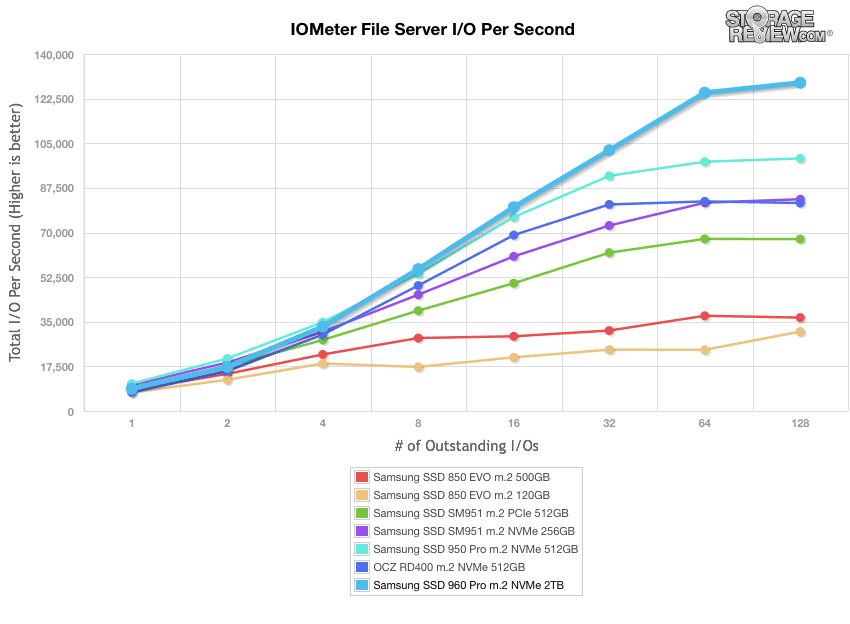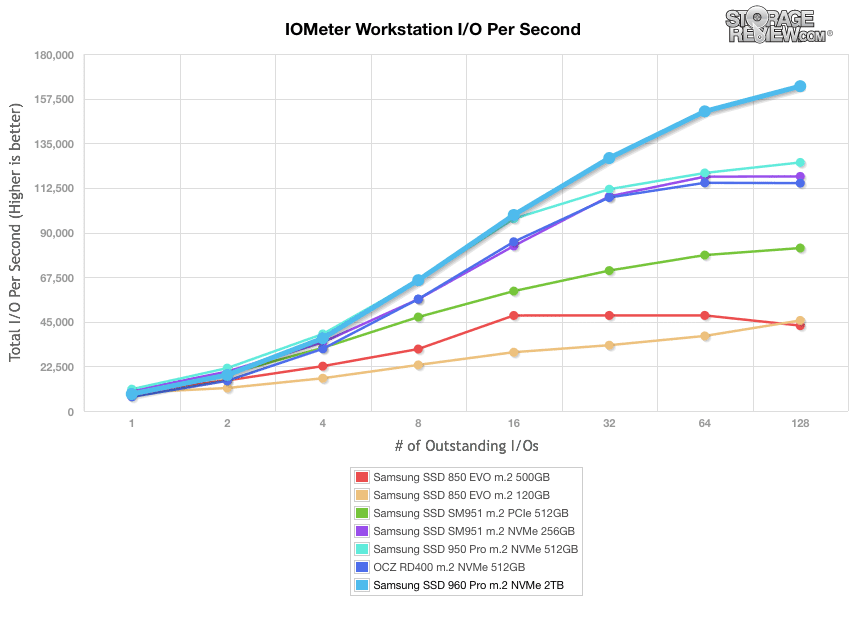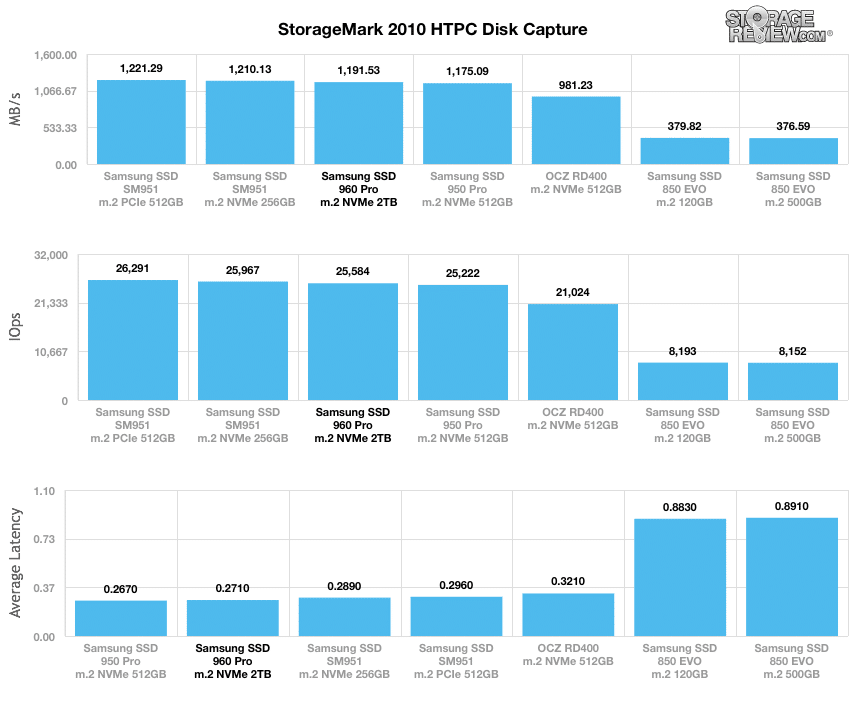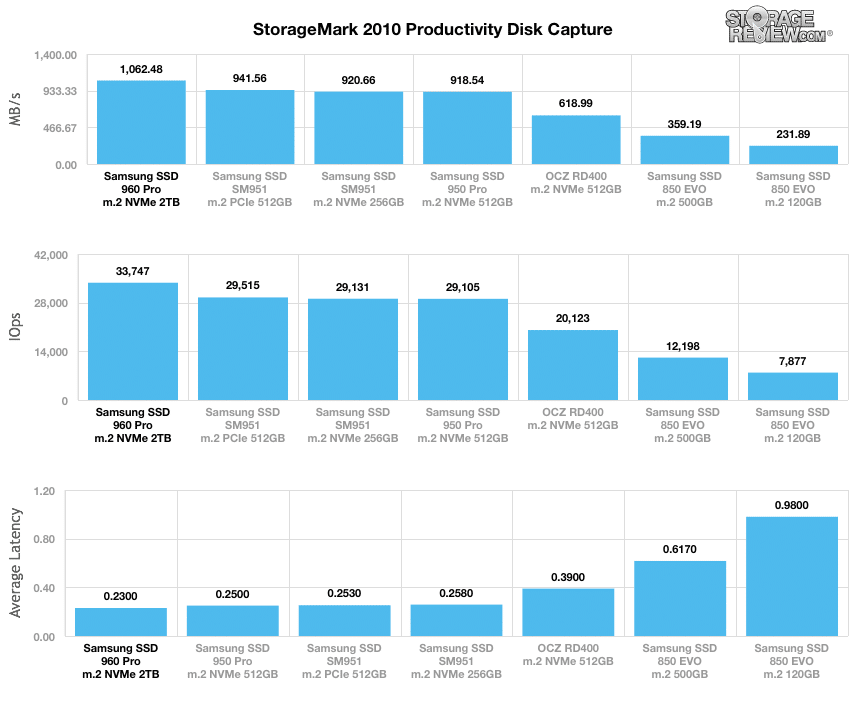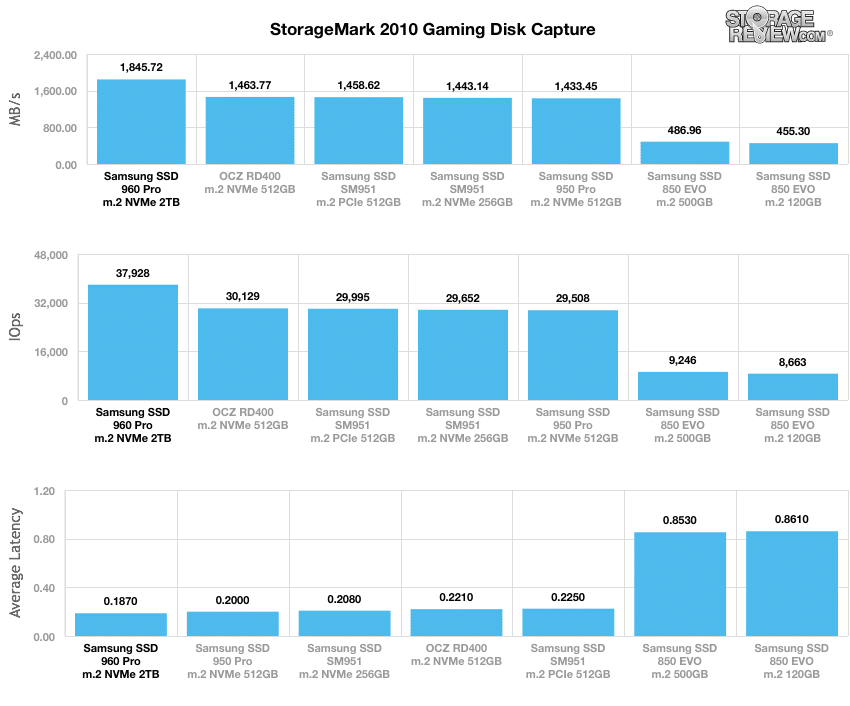
The Samsung 960 PRO M.2 SSD is the newest addition to the company’s portfolio of high-performing solid-state drives. Whether it’s a flash drive or an enterprise SSD, we always know what we are getting when Samsung releases a new storage product: quality components, good performance, and competitive pricing. So it’s always exciting to see a new drive hit the market. In this case, the Samsung 960 Pro is the successor of the 950 Pro, a drive that offered users a way to significantly upgrade their notebooks and workstations, coupled with enterprise-grade reliability features. The 960 offers more of the same, but is improved in virtually every way.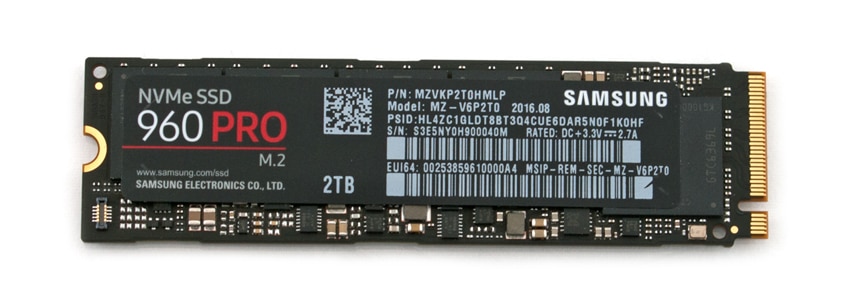
Specifically designed for professionals and enthusiasts, the Samsung 960 Pro is an M.2 form factor and focuses on both next-generation performance and endurance. It leverages the PCIe Gen. 3.0 x 4 lane interface NVMe 1.2 protocol and comes equipped with the company’s 3rd generation of V-NAND, along with its newly developed Polaris controller. Samsung also quotes their new M.2 drive as having 3,500MB/s in sequential read performance and 2,100MB/s in sequential writes, while random read and write operations are said to reach 440,000IOPS and 360,000IOPS, respectively
The Samsung 960 Pro is also touted as the market’s first client PC SSD using the standard 2280 m.2 form factor in a massive 2TB capacity. Samsung also offers the options of 1TB and 512GB models. Consistent with the company’s pedigree in reliability, the 960 SSD has high endurance levels up to 1.2 PB in TBW as well as a generous 5-year warranty. The company claims that its sustained performance levels are double that of its predecessor, the 950 Pro.
Samsung 960 PRO M.2 SSD Specifications
- Interface: PCIe 3.0 x 4, NVMe 1.2 (Partial)
- Capacities: 512GB, 1TB (1,024GB), 2TB (2,048GB)
- Controller: Samsung Polaris Controller
- DRAM Cache Memory: 512MB LPDDR3, 1GB LPDDR3, 2GB LPDDR3
- Dimensions: Max 80.15 x Max 22.15 x Max.2.38 (mm)
- Form Factor: M.2(2280)
- Performance
- Sequential read: 3,500MB/s
- Sequential write: 2,100MB/s
- QD1 Thread
- Random Read: 14,000 IOPS
- Random Write: 50,000 IOPS
- QD32 Thread
- Random Read: 330,000 IOPS (512GB), 440,000 IOPS (1TB, 2TB)
- Random Write: 330,000 IOPS (512GB), 360,000 IOPS (1TB, 2TB)
- Power consumption:
- Idle (w/ APST on): 40mW
- Active:
- Read: Typ. 5.1W (512GB), Typ. 5.2W (1TB), Typ. 5.8W (2TB)
- Write: Typ. 4.7 (512GB), Typ. 5.2 (1TB), Typ. 5.0W (2TB)
- Temperature
- Operating: 0°C to 70°C
- Non-Operating: -45°C to 85°C
- MTBF: 1.5 million hours
- TBW: 400TBW (512GB), 800TBW (1TB), 1,200TBW (2TB)
- Warranty: 5-years
Design and build
The Samsung 960 Pro uses a similar design to its predecessor, which uses mostly a black color scheme (including the PCB) and measures in at just 80.15mm x 22.15mm. The parts of the M.2 drive are exposed, so users should be cautious when handling the Samsung 960 Pro, as components could be harmed.
On the front side is the branding and information sticker, which covers the NAND chips and most of the PCB. It displays the Samsung branding, as well as information about the drive including the model number, form factor and capacity size. All capacities use the Samsung Polaris Controller and Samsung V-NAND.
Consumer Synthetic Benchmarks
All consumer SSD benchmarks are conducted with the StorageReview HP Z640 Workstation. We compared the Samsung 960 Pro SSD to the following drives:
- Samsung SM951-NVMe M.2 SSD
- Samsung SM951 PCIe M.2 SSD
- Samsung 850 EVO M.2 SSD
- Samsung 950 Pro M.2 SSD
- OCZ RD400 m.2 NVMe 512GB
All IOMeter figures are represented as binary figures for MB/s speeds.
In our 2MB sequential benchmark, the Samsung 960 Pro recorded some best-of-class results with a blistering 2,222.93MB/s read and 1,786.72MB/s write. The next best drive was the OCZ RD400 m.2 NVMe, which posted 1,934.44MB/s read and 1,475.39MB/s write.
It was a similar story when looking at random 2MB transfers, as the 2TB Samsung 960 Pro boasted reads and writes of 1,339.76MB/s and 1,237.57MB/s, respectively. The OCZ RD400 m.2 NVMe 512GB was the top performer here, with an impressive 1,446.51MB/s write and 1,771.58MB/s read.
Our random 4K benchmark puts more strain on the drives in terms of throughput. Here, the 2TB Samsung 960 Pro fell to fourth place with 34.30MB/s read and 150.83MB/s write. The top performing drive was the Samsung 950 Pro.
Looking at IOMeter of the same test, though still good, the 2TB Samsung 960 Pro found itself behind several drives again with 8,781.98 IOPS read and 38,612.99 IOPS write. The Samsung 950 Pro m.2 (512GB) was the best performer here, with 13,516.34 IOPS read and 44,903.69 IOPS write.
In terms of our 4K write latency benchmark, the Samsung 960 Pro showed some very good numbers with 0.02545ms and 0.1857ms in average and maximum latency, respectively.
For our next 4K test, we move to a workload with 100% write activity, which scales from 1QD to 64QD. Here, the Samsung 960 Pro showed some pretty incredible speeds, ranging from 42,067.94 IOPS in burst, to 200,923.39 IOPS in the terminal (almost 70,000 more IOPS than the next best drive).
Results told a similar story in our aligned-read benchmark with even a wider margin of performance results. The Samsung 960 Pro posted an IOPS range of 8,848.34 to a whopping 236,258.23 in the terminal. The next best drive, Samsung SM951 m.2 256GB, recorded a maximum of 183,971.64 IOPS.
Our final consumer-synthetic benchmarks compare the drives in a series of mixed-server workloads with a queue depth of 1 to 128. Each server profile has a strong bias towards read activity, ranging from 67% read with the database profile to 100% read in the web server profile.
The database profile features a 67% read and 33% write workload, focusing on transfers around 8K in size. Here, the Samsung 960 Pro continued its impressive performance with a range of 8,966.03 IOPS to 154,105.38 IOPS, placing it well at the top of the leaderboard.
Our next benchmark is the read-only web-server profile, which uses transfer sizes ranging from 512 bytes to 512KB. In this scenario, the Samsung 960 Pro posted 7,812.55 IOPS through 74,262.19 IOPS, placing it in the middle of the pack.
During the file-server profile, which has 80% read and 20% write workload spread out over multiple transfer sizes ranging from 512-bytes to 64KB, the Samsung 960 Pro found itself back at the top of the leaderboard. The high-capacity Samsung SSD posted a range of 8,704.56 IOPS through 128,743.64 IOPS.
The last profile looks at workstation activity, with a 20% write and 80% read mixture using 8K transfers. The Samsung 960 Pro recorded another impressive, best-of-class range yet again with 8,566.09 IOPS to 163,786.19 IOPS.
Consumer Real-World Benchmarks
While the results of synthetic benchmarks are important in identifying the key strengths and weaknesses of a drive, performance in these tests does not always translate directly into real-world situations. To get a better idea how the high-capacity Samsung 960 Pro drive will handle itself in the field, we will chart StorageMark 2010 HTPC, Productivity, and Gaming traces against comparable drives. Higher IOPS and MB/s rates with lower latency times are preferred.
The first trace is based on use as a Home Theater PC (HTPC). The test includes playing one 720P HD movie in Media Player Classic, one 480P SD movie playing in VLC, three movies downloading simultaneously through iTunes, and one 1080i HDTV stream being recorded through Windows Media Center over a 15-minute period.
The Samsung SSD 960 Pro m.2 NVMe 2TB posted a solid 25,584 IOPS, 1.2GB/s, and 0.271ms in average latency. Though in the middle of the pack, these numbers were not far off the leaders.
The next trace simulates disk activity in an office workstation or productivity scenario. This test includes three hours of operation in an office productivity environment with 32-bit Windows Vista running Outlook 2007 connected to an Exchange server, web browsing using Chrome and IE8, editing files within Office 2007, viewing PDFs in Adobe Reader, an hour of local music playback, and two hours of streaming music via Pandora.
In the productivity benchmark, the high-capacity Samsung 960 SSD was by far the best drive tested. Here, it posted a bar-setting 33,746 IOPS, 1062.48MB/s and 0.23ms in average latency.
The final consumer real-life benchmark simulates disk activity during gaming. This simulation taxes the drive’s read performance, with 6% write operations and 94% read operations. The test consists of a Windows 7 Ultimate 64-bit system pre-configured with Steam, with Grand Theft Auto 4, Left 4 Dead 2, and Mass Effect 2 already downloaded and installed. The trace captures the heavy read activity of each game loading from the start, as well as textures as the game progresses.
In our gaming benchmark, results were much of the same. However, the Samsung 960 Pro showed an even larger lead among the other drives, posting an impressive 37,928 IOPS, 1845.72MB/s, and 0.187ms in average latency.
Conclusion
The Samsung 960 Pro is certainly an impressive drive and significant step up from its predecessor, the 950 Pro. Leveraging PCIe Gen. 3.0 via the NVMe 1.2 protocol, the company’s 3rd generation of V-NAND and a new Polaris controller, the Samsung 960 Pro offers fantastic performance and enhanced reliability. It also features long-term dependable performance due to minimized performance degradation, doubling that of the 950 PRO. As a result, users will be able to use the drive for heavy daily workloads for a good amount of time.
Unsurprisingly, the Samsung 960 Pro shined throughout our extensive benchmarks, often boasting best-of-class performance. In our 2MB sequential benchmark, it recorded a blistering 2,222.93MB/s read and 1,786.72MB/s write, while random 2MB transfers showed reads and writes of 1,339.76MB/s and 1,237.57MB/s, respectively; this easily took top spot among comparable drives.
We also looked at smaller 4k random transfer benchmarks at QD1, where the Samsung 960 Pro fell a bit behind in the rankings, posting 34.30MB/s read and 150.83MB/s write and 8,781.98 IOPS read and 38,612.99 IOPS write. The Samsung 950 Pro m.2 (512GB) was the best performer here, with 13,516.34 IOPS read and 44,903.69 IOPS write. However, during our ramped 4K tests, workloads of 100% write activity and 100% read activity, the Samsung 960 Pro dominated the competition. Our series of mixed-server workloads told a similar story, as it was the top performing drive by a landslide in our workstation, file server and database profiles.
Samsung continues to set a high bar with its storage products. The company has released the highest capacity M.2 drive for consumers, for the second year in a row (last year they were the first to release a 1TB M.2 and this year they are the first to release a 2TB M.2 for consumers). On top of that, the drive has record setting sequential performance, the highest we’ve yet to test on the consumer side. The 960 PRO’s form factor is ideal for where the market is heading. The only real downside to the drive, is the same downside to all new technology, early adopters will pay the price penalty, with the 2TB MRSP of $1,299.
Pros
- Highest capacity M.2 on the market
- Record setting sequential performance
- The best Gaming Disk Capture so far
Cons
- Fell behind its predecessor and the SM951 in a few benchmarks
- Price premium for early adopters
Bottom Line
The Samsung 960 Pro is the highest capacity M.2 drive on the market with recording setting performance, all within a tiny form factor.
Special Offers From Samsung.com
Sign up for the StorageReview newsletter

